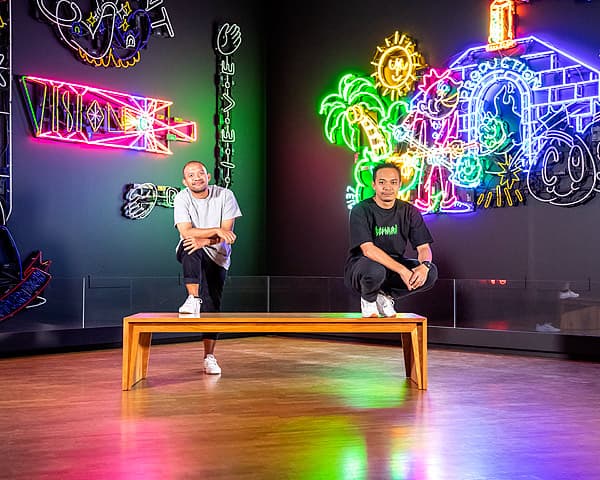Contemporary
worlds
Indonesia
Uji ‘Hahan’ H. Saputro
The art world is a sophisticated network of systems of influence, creating a complex interdependent industry ruled by what Uji ‘Hahan’ Handoko Eko Saputro has termed ‘The Holy Trinity’—the collector, the gallery and the artist. Hahan’s raucously witty and bitingly honest practice is an investigation of these structures and how ‘The Holy Trinity’ are driven by the twin desires of both critical and commercial success.
Hahan was in art school in Yogyakarta when the international art market first began to take interest in contemporary Indonesian art. By the mid-2000s prices started to climb steeply, and curators, collectors and dealers began to descend on Yogyakarta looking for the next big thing. By the late 2000s Indonesian artists were on the front cover of Sotheby’s auction catalogues, presented in solo exhibitions in leading international art museums and represented by powerhouse commercial galleries. Hahan watched this phenomenon unfold and meticulously tracked it. This diligent research informs his practice where the machinations of the art world remain the core subject.
Silent Operation: Sign study based on the formula of contemporary (visual) art 2018–19 is Hahan’s most ambitious work to date. Working in collaboration with Adi ‘Uma Gumma’ Kusuma, the installation transforms an entire gallery into an immersive structural analysis of the art world. The installation itself embodies a sense of contemporaneity often found at art fairs and biennales, with neon lights in competing colours. It is overwhelming and slightly disconcerting. Anchoring the space is an interactive game application of a mind-map that seemingly tracks a route for success in the art world. Upon entering the viewer is invited to become a player in this game by participating in ‘network maintenance’ and pondering pricing as they seek to find the right formula for success as a contemporary artist. As the viewer navigates their movements they quickly discover that there is no clear pathway, no guarantee of success and endless relationships to maintain.
Hahan’s practice is characterised by inclusivity; his aesthetics are compelling for the first-time gallery viewer and his semiotic jokes amusing for even the most hardened art historian. By addressing his audiences through multiple registers his practice enables every viewer to feel empowered. This careful support allows him to make transparent the convoluted processes of the closed structure of the art world in a bid to democratise it. Make no mistake, while Hahan’s work may be heralded by art critics, it is the general public’s approval he chases most.
Mikala Tai

Uji ‘Hahan’ H. Saputro
